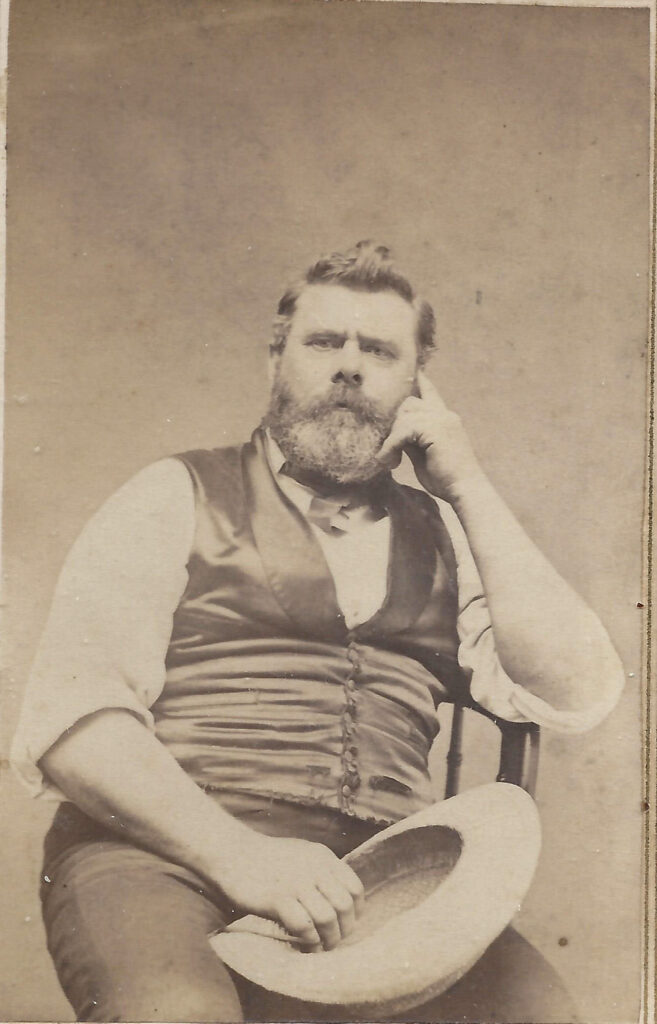Section #4 - Early sectional conflicts over expanding slavery lead to the Missouri Compromise Of 1820
Chapter 45: Another Bloody Slave Uprising Occurs
1800/1805/1811
Gabriel, Chatham, Deslondes

The vast majority of blacks living as slaves in 1820 have little hope of freedom – either through manumission in America or “re-colonization” to Liberia.
For a few, daily despair leads them to seek revenge on their white masters.
Some aspire to grand schemes, along the lines of Toussaint Louverture’s successful rebellion across all of Haiti in 1791. Others are small scale in nature, aimed solely at murdering their immediate tormentors.
All will be readily put down by local authorities, and avenged with ruthless punishment to deter repetition.
Even so, they play a part in the long road to black freedom.
One early uprising, in 1800, ends with James Monroe himself, then Governor of Virginia, calling out the state militia for support. A slave named Gabriel, a blacksmith, and his brother Martin, a preacher, plan to gather their forces, march on Richmond under the Patrick Henry banner (“Liberty or Death”), kill as many whites as possible, and then, possibly, sail off to Haiti to survive. But word of their plot slips out in advance, and on August 30, Gabriel and others scatter in hopes of escape. Monroe’s militia quickly tracks them down, and a total of 26 blacks are subsequently hanged, including Gabriel, Martin and another brother.
Five years later, in January 1805, spontaneous resistance breaks out at Chatham Manor, the prestigious plantation owned by Washington’s friend, William Fitzhugh. Slaves there overpower and whip their overseer and four other whites. In response one black is executed, two die trying to escape and two others are sold and sent away.
A much broader rebellion takes place in Louisiana in January 1811. It is led by a mulatto slave named Charles Deslondes who hopes to repeat Toussaint L’ouverture’s successful black revolution in Haiti. His targets are the cane field plantations along Louisiana’s “German Coast” (so named for its original European settlers) and the city of New Orleans some 20 miles to the south.
Deslondes plans well and recruits an initial band of 25 slaves to join his attack. It begins on the night of January 8, 1811 on the 1900 acre Manual Andry Plantation, where 24 year old Gilbert Andry is hacked to death while his parents barely escape the scene in a canoe. Armed with the Andry’s militia gear, the rebels begin their march south along the River Road on January 9, destroying the Reine, Laclaverie, Meuillon and Fortier plantations and adding upwards of 200 slaves to their force.
Upon learning of the raids, Louisiana’s Territorial Governor, William Claiborne responds quickly. He calls out the local militia and troops under Major General Wade Hampton, seals off the roads and bridges into New Orleans, and imposes a 6pm curfew on all black males in the city.
Around 8:00am on January 10, Deslondes’ men are confronted in the Fortier fields by Hampton’s troops and some 80 planters, led by Manual Andry himself. A pitched battle ensues until the rebels run out of ammunition and surrender. Roughly twenty blacks are killed in action, fifty are captured, and the rest attempt to escape into the nearby swamps, with Deslondes among them. But tracking dogs run him down on January 11, after which reports say “Militiamen chop off his hands, break his thighbones, shoot him dead and roast his corpse.”
On January 13 a five-man tribunal convenes, with many of the rebels tried and hanged or shot before their severed heads are displayed on poles along the River Road entrance to New Orleans.
May 30, 1822
Denmark Vesey’s Insurrection
In 1822 the banner is again picked up, this time in South Carolina, by a slave named Denmark Vesey.
After spending his youth in Haiti, and witnessing the Toussaint revolt, he is brought to America as a house slave by his owner, Joseph Vesey. But luck shines on him when he wins $1500 in a Charleston city lottery. He uses some of the cash to buy his freedom, then makes his living as a carpenter. He is also instrumental in founding the African Methodist Episcopal Church in the city in 1817.
Vesey is well spoken and involved with the slavery debate. He cites both the Bible and the Declaration of Independence in arguing for abolition. But his hopes are evidently dashed when city authorities shut down his church, and DC politician’s compromise over Missouri.
In response he puts together a plan that mirrors Gabriel’s revolt in 1800. This plan, which filters out to many slaves in the area, calls for slaves and free blacks to band together, murder the plantation owners, then rampage through Charleston before sailing off to liberty in Haiti.
All this is to occur symbolically on July 14, 1822, the 33rd anniversary of Bastille Day in Paris.
Like Gabriel’s plan, however, authorities learn of the attack and arrest a host of possible co conspirators in advance. As usual they are tried summarily and 67 of them are hanged, including Denmark Vesey. In the tradition of the Roman legions of old, many of their heads are then cut off and displayed on pikes in public places, as a warning.
In hindsight, none of these early uprisings, from Gabriel to Vesey, represent an existential threat to the Southerner’s control over the slave population.
Nevertheless each one, in its own way, strikes terror in the minds of white men.
The vision of an African savage approaching with a pitchfork or scythe in hand becomes every bit as imaginable as that of an Indian tribesman brandishing a war club.
And this is true both for Southerners who live in the midst of blacks – and Northerners who progressively conclude that they do not want to.